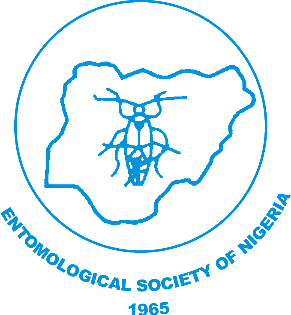
Analysis of Pollen in Stingless bee (Meliponula ferruginae [ Moure]) Honey, an Indicator of Deforestation Levels at University of Ilorin and its Environs
NJE Vol. 40: 1-26, 2024
DOI.10.36108/NJE/4202/04.0110
Liadi, M.T,1* Adesiyun, A. A. 2, Uddin II R. O. 2, Oyerinde A.A. 1 and Orijemie E. A.3
1Department of Crop Protection, Faculty of Agriculture, University of Abuja
2Department of Crop Protection, Faculty of Agriculture, University of Ilorin
3Department of Department of Archaeology and Anthropology, University of Ibadan
Abstract
Pollen analysis of the honey of stingless bees was conducted to ascertain the levels of deforestation in the campus of the University of Ilorin, North Central Nigeria. Thirteen honey samples from the nests of Meliponula ferruginae in four different localities, with varied deforestation levels, in the University of Ilorin Agro-Ecological areas were analysed. Pollen grains were identified and counted under high power light microscope. Species diversity assessed using Shannon diversity index, species richness and dominance of the floral origin of the pollen were calculated using PAST Software. A total of 43 pollen types belonging to 26 families, and a fungal spore, Lasiodiplodia theobromae, were recovered. Twenty-four pollen types were recovered from samples from Bolounduro and Oyun, both slightly disturbed agro-ecological areas; 14 pollen types were from the Senior Staff Quarters, a slightly disturbed agro-ecological area bordered with date palm plantation and twenty-six pollen types were from Jalala, a highly disturbed agro-ecological area. The most dominant pollen types namely Hymenocardia acida, Lannea sp., Elaeis guineensis, Alchornea sp., Vitellaria paradoxa, Entada abyssinica and Parkia biglobosa indicated that the study area was Guinea savanna. The honey samples from the slightly disturbed localities yielded pollen of open/secondary forest while those from the highly disturbed locality yielded an array of the pollen of economic plants and herbs characteristic of anthropogenic disturbance. The honey samples from all the sites showed high diversity of pollen types. Polyflora honey with high Shannon-Weiner Diversity index and monoflora with low Shannon-Weiner Diversity index were observed in all the sites except at Bolounduro where monoflora with high Shannon-Weiner Diversity index was observed.
Keywords: Disturbed agro-ecological areas, honey, stingless bees, pollen analysis, Ilorin
